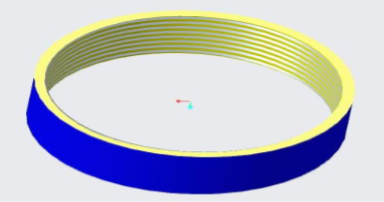Reverse Engineering of A “O Ring Structure with Internal Thread” By FDM 3D Printer
Main Article Content
Abstract
3-D printing which has end up a brilliant topic in today’s technological discussion in which a 3D item is created by laying down successive layers of material. it is a mechanized method in which 3-D objects are fast made on moderately sized machine related to a laptop containing blue prints for the objects. The concept "Additive manufacturing" reveal a diversity or miscellany of procedure in which material is linked or joined over control system to produce a 3-Dimensional object, where material is add up at the same time (material can be liquid fragment, powder dust and a thin wire made of thermoplastics for eg. PLA, ABS, PETG etc. or a composites made of a combination of PLA and wood powder or metal powder), in most cases layer by layer. One of the crucial advantages of Additive manufacturing is the capability to manufacture very complicated shapes and geometries for manufacturing any 3D printed part a CAD file of the 3D model is required which can be converted into stl file by CAD software and further converted into g-code extension by slicing software before it is fed to the 3D printing machine. The most-commonly used 3D-printing process is a material extrusion technique called fused deposition modelling. Here, The O-ring is manufactured using FDM 3D printer by designing the ring in CAD software using reverse engineering concept for dimensions for fixed implementation or in active applications where there is relative movement between the cross-section and the O-ring. Fixed implementation of O-ring may contain gas or a liquid fasten application.
Article Details

This work is licensed under a Creative Commons Attribution-NoDerivatives 4.0 International License.

